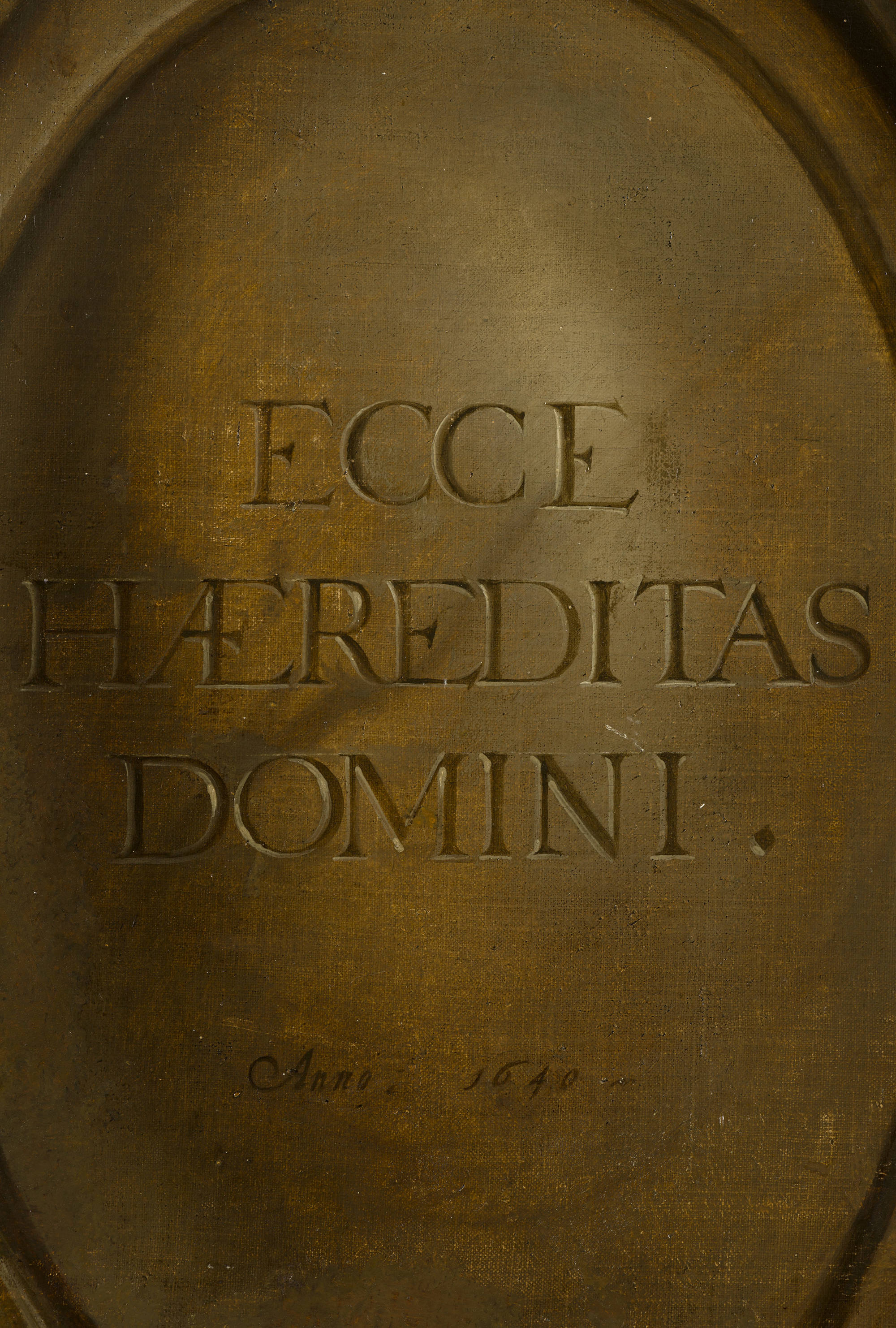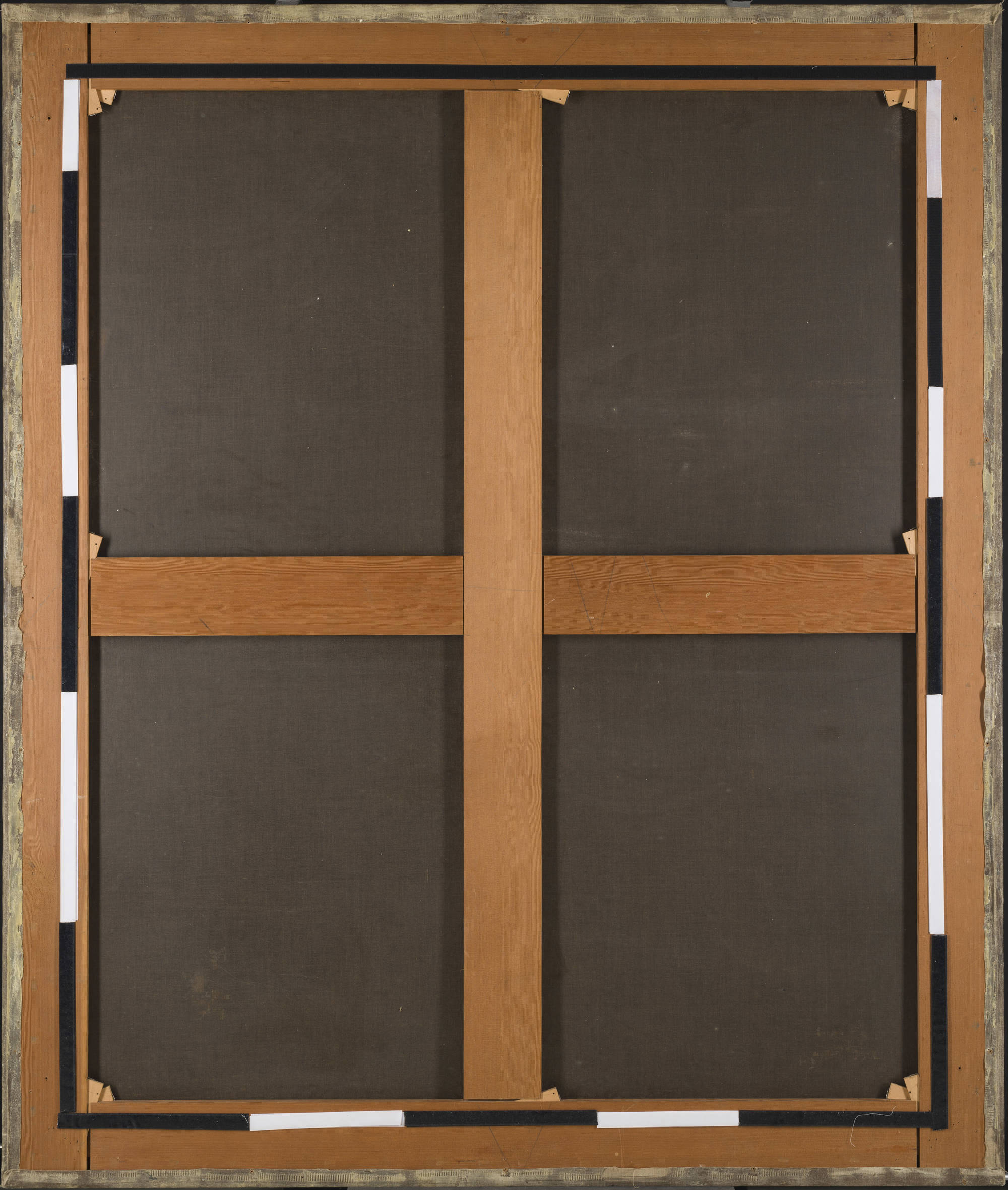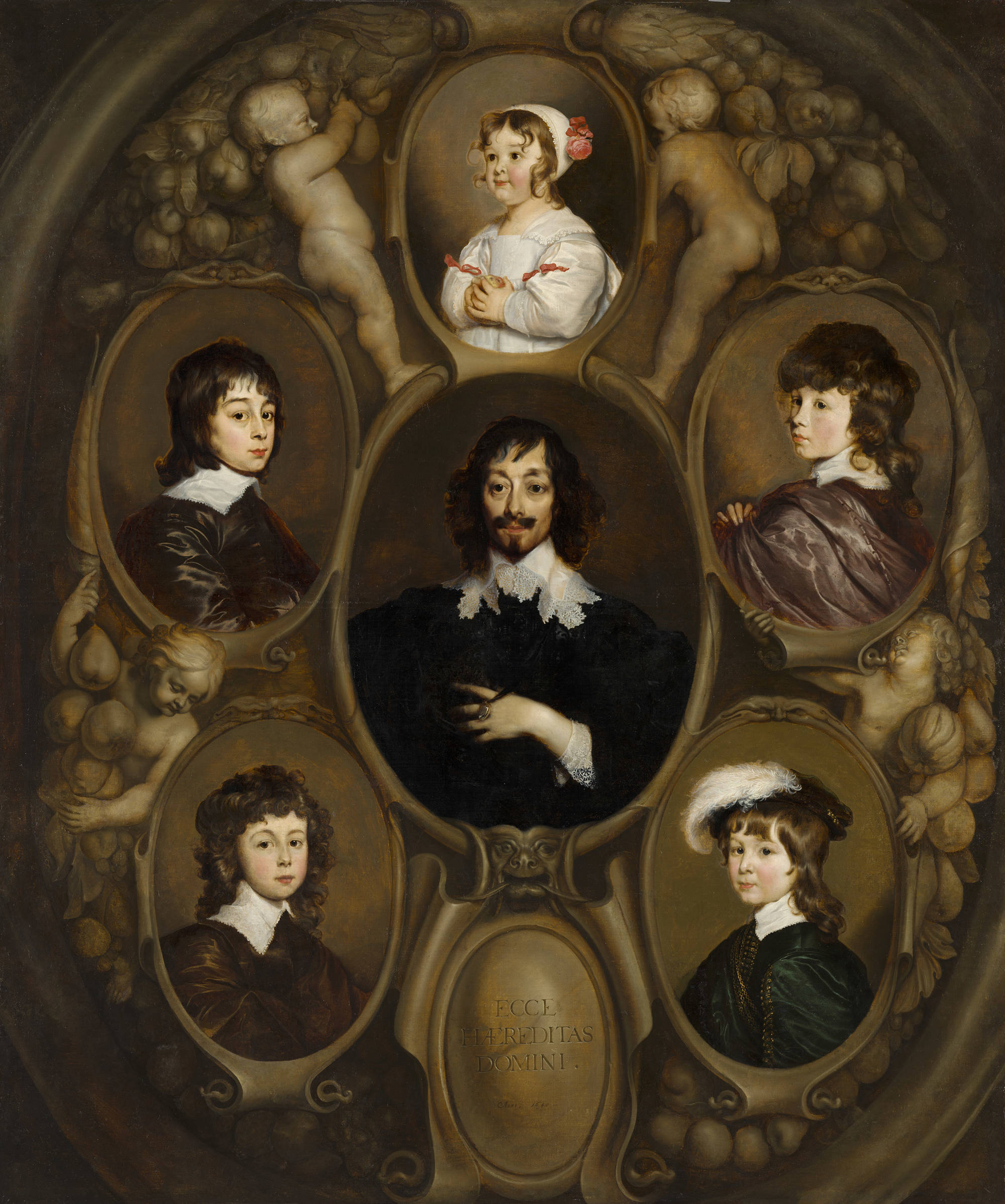Constantijn Huygens is portrayed in the middle of this painting, encircled by his five children. Huygens became famous as a man of letters and was secretary to three consecutive stadholders, Frederik Hendrik, William II and William III. His house faced the Mauritshuis in The Hague, and was likewise built in a Dutch classicising style. Huygens had this family portrait made by the Hague painter Adriaen Hanneman for his urban palace, where it was displayed as an overmantel.
From left below, clockwise, we see the portraits of: Lodewijk (nine years old), who became bailiff of the city of Gorinchem in 1672 and subsequently married Jacomina Teding van Berkhout; Constantijn Junior (twelve years old) who became secretary to Prince William III and married Suzanna Ryckaert in 1672; Suzanna (three years old), she was Huygens’ only daughter, she married her cousin Philips Doublet in 1660; Christiaan (eleven years old), he would become world famous as the inventor of the pendulum clock and discoverer of the ring around Saturn; and Philips (seven years old), the youngest son, who died at a young age while on a diplomatic mission to Sweden and Poland.
Huygens was a proud father, who instructed his children himself once they had reached the age of four. He taught them to read and write, but without undue pressure. Later he also employed teachers at home to instruct them in skills such as dancing, fencing and playing musical instruments. Huygens considered such a broad education crucial for young men who would later be expected to move in higher circles. The sons ultimately attended university, which was completed with a Grand Tour, an educational journey throughout Europe. Suzanna’s education followed a somewhat different course: while she learned how to read and write, as of the age of five she was taught primarily domestic skills such as sewing, embroidery and spinning. She also learned French - a language a lady of standing was required to speak in order to be part of society.
In the years when his offspring were growing up, Huygens kept a diary in which he recorded their most important developments. For example, we know that Lodewijk had difficulty pronouncing the letter ‘s’ and that as a three-year-old Christiaan was particularly jealous of his older brother Constantijn. To the displeasure of his father, at a certain point Constantijn began using coarse language, which he had picked up outside of the home. We also know that Philips could walk unassisted when he was one year old, while his sister Suzanna took somewhat longer to do so and used a baby walker for awhile.
The likeness of Suzanna van Baerle (1599-1637), Huygens’ wife and the mother of their five children, is missing in the painting. Suzanna had died three years earlier, just days after giving birth. Huygens considered this group portrait as homage to his wife. The canvas bears an inscription: ‘ecce / hæreditas / domini' (Behold the legacy of Our Lord). Huygens devised this text as a kind of in memoriam.
(this is a reworked version of a text published in: L. van der Vinde, Children in the Mauritshuis, The Hague 2007, pp. 48-51)






